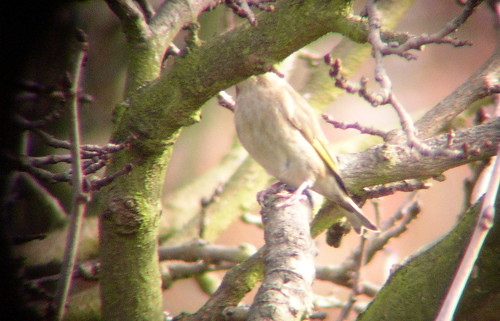I went for a walk in the local woods a couple of days ago, and forgot to take my binoculars because in my head I wasn’t birding, I was just going out to enjoy the spring sunshine. That’s silly, of course; its not something you can turn off. Even if I’m in central London, there’s a little bit of my brain ticking over in the background in readiness, just in case something more interesting than a pigeon should fly past. And walking through the woods on a sunny day in late March, with all the birds gearing up for the breeding season and not too many pesky leaves on the trees, it inevitably became a birdwatching walk.
I saw Woodpigeon, Great Spotted Woodpecker, Carrion Crow, Magpie, Blue Tit, Great Tit, Wren, Robin, Blackbird, Song Thrush, Chaffinch, Nuthatch, Treecreeper, and Starling. Nothing very surprising, but reasonable enough for London. And actually I quite enjoyed doing some naked-eye birding; just watching the birds, unmediated by binoculars.

But I was thinking how frustrating I would have found the same walk if I wasn’t familiar with the local birds. By the nature of the thing, most of the birds were some distance away, or partially obscured, or in shadow, and the only reason I could generally identify them quickly and easily was that I knew them well. The same sightings of unfamiliar species would have seemed like glimpses.
It’s an odd experience when you see new species for the first time. It’s almost like you don’t actually see a bird, you see an unstable collection of impressions. Everything can be misleading, depending on the lighting and angle; even the most basic things like size and colour are elusive and untrustworthy. You can catch a flash of white on the head and not know whether it’s the throat or an eyestripe, or see some pale colour on the wings and not know whether it’s white or grey or yellow. You can lose sight of it for a moment and find it again and not be completely sure whether it’s the same bird.
And then there’s a moment, when you’ve seen it enough times, when it abruptly switches from being a inchoate mess of birdiness to a type, a species. And the next time you see one you just recognise it. Since this moment of coalescence is often associated with finding it in a field guide, it sometimes feels as though by naming it, you have given it form.
And if you tick off a new bird without having internalised it in that way, no matter how sure you are of the identification, it’s never quite as satisfying.